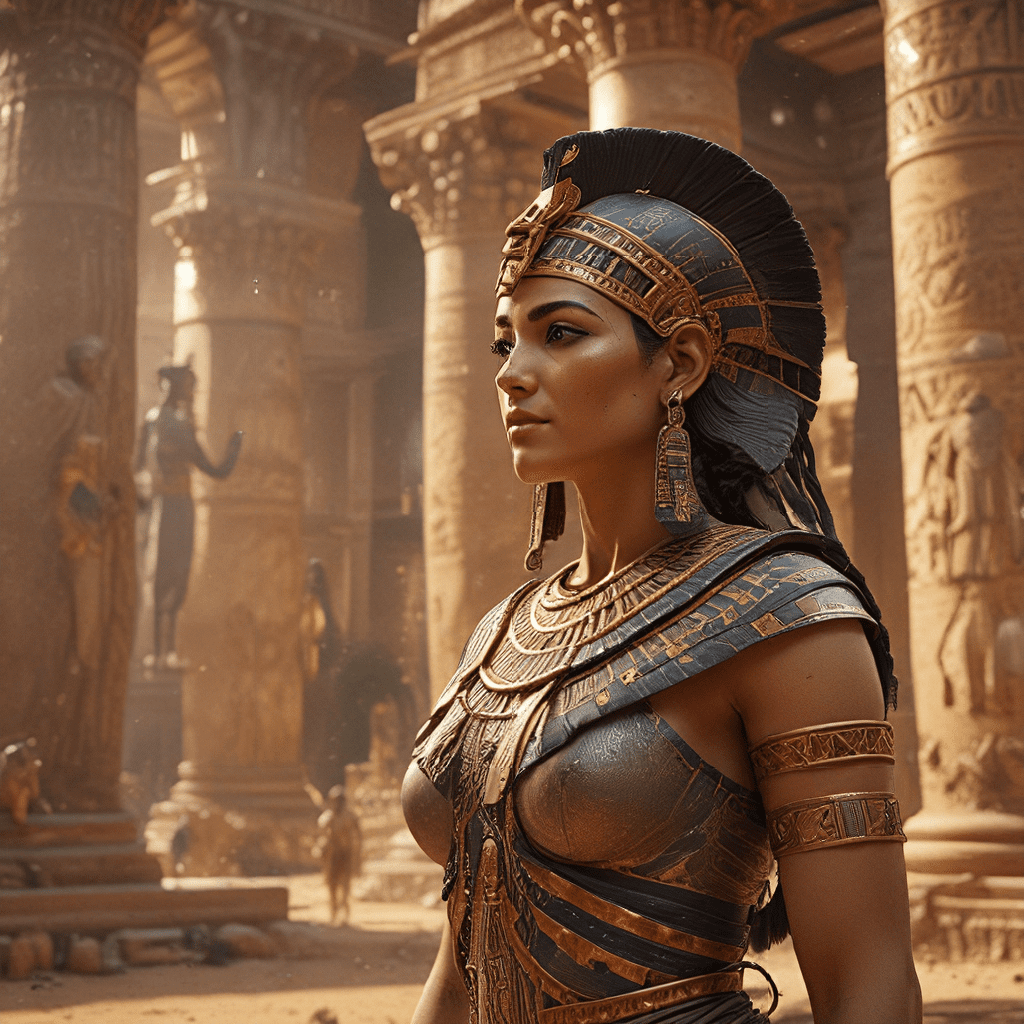Introduction: The End of an Era
Ancient Egypt, a civilization renowned for its majestic pyramids, powerful pharaohs, and intricate hieroglyphics, reached its zenith with the Ptolemaic dynasty. However, this era of grandeur gradually gave way to internal strife and external pressures. The Ptolemaic rulers, descendants of one of Alexander the Great’s generals, faced challenges in maintaining control over their vast empire. Their power waned, leading to political instability and economic decline. As the Ptolemaic dynasty crumbled, a new power emerged on the horizon – the Roman Republic, hungry for expansion and eager to claim Egypt’s vast riches. The Roman conquest marked a pivotal turning point in Egypt’s history, ending its independence and ushering in a new chapter under Roman rule.
The Roman Conquest and the Rise of Alexandria
The Roman conquest of Egypt was spearheaded by Octavian, later known as Augustus Caesar, who emerged victorious in the Roman civil wars. The Battle of Actium in 31 BC proved to be the decisive moment. In this naval battle, Octavian’s forces clashed with those of Mark Antony and Cleopatra, the last Ptolemaic ruler of Egypt. The defeat of Antony and Cleopatra marked the end of the Ptolemaic dynasty and the beginning of Roman control over Egypt. Alexandria, the once-grand capital of the Ptolemaic kingdom, became a prominent center of Roman power and influence. The city’s strategic location, bustling harbor, and vast cultural wealth made it a vital hub for trade, education, and administration.
Egypt as a Roman Province
Upon conquering Egypt, the Romans established it as a Roman province, incorporating it into their vast empire. The administrative structure of Roman Egypt was characterized by a distinct separation of powers. A Roman Prefect, appointed by the emperor, served as the ultimate authority, overseeing all aspects of governance. The Prefect was assisted by a local bureaucracy, composed of both Egyptian and Roman officials, who managed the day-to-day affairs of the province. Roman law, with its emphasis on order and justice, gradually replaced the existing Egyptian legal system. The Roman legal framework was implemented throughout the province, shaping Egyptian society and influencing its legal traditions for centuries to come.
The Romanization of Egypt
The Roman conquest brought about significant changes in Egypt’s cultural landscape. Roman customs, languages, and religious beliefs gradually permeated Egyptian society. The Roman influence was particularly evident in the realm of infrastructure. The Romans constructed roads, bridges, and aqueducts, connecting different parts of the province and facilitating trade and communication. Roman temples were built in various cities, showcasing the grandeur of Roman architectural styles. The Roman military presence was a constant reminder of their rule. Egyptian soldiers were integrated into the Roman army, contributing to the empire’s military might and fostering a sense of shared identity.
The Economy and Trade
The Roman era saw a flourishing of trade in Egypt. Alexandria, with its vast port, became a central hub for commerce, attracting merchants from across the Roman Empire and beyond. The Nile River, a lifeline for Egyptian civilization, played a vital role in facilitating trade. The Roman administration imposed taxes on Egyptian farmers, which contributed to the Roman treasury. However, these taxes sometimes strained the financial resources of Egyptian farmers, impacting their livelihoods. Egypt’s rich agricultural land yielded abundant harvests of grain, papyrus, and textiles, which were exported throughout the Roman Empire as luxury goods.
Religion and Culture
The Roman era witnessed a fascinating blend of Egyptian and Roman religious beliefs. Syncretism, the fusion of different religious traditions, was prevalent. Egyptian deities were often associated with Roman gods, leading to the emergence of new cults. Isis, the Egyptian goddess of motherhood and magic, gained widespread popularity throughout the Roman world. Serapis, a syncretic deity combining elements of Osiris, Zeus, and Apis, also attracted numerous followers. The influx of Roman art, literature, and architecture left an indelible mark on Egypt. Roman sculptures, mosaics, and architectural styles found their way into Egyptian cities, influencing local artistic expressions.
Key Figures and Events
During the Roman era, Egypt witnessed the rise of prominent figures who served under Roman rule. Among them was the philosopher Philo of Alexandria, known for his philosophical and theological insights, and the physician Galen, whose medical writings influenced medical practice for centuries. Despite the Roman rule, Egypt experienced occasional rebellions and uprisings, fueled by discontent with Roman governance. These revolts, though often suppressed, demonstrated the enduring spirit of Egyptian resistance. The most notable rebellion occurred during the reign of Emperor Trajan, led by a charismatic figure named Avidius Cassius, who briefly challenged Roman authority.




